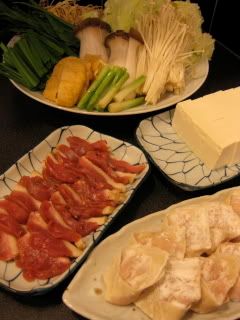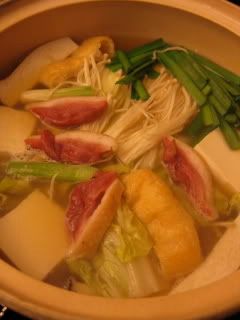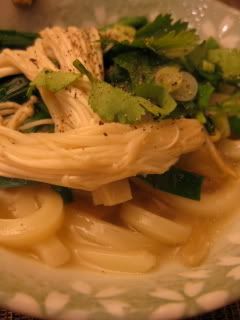
I cook a lot of Japanese home-style Chinese dishes. Steamed Tofu Shrimp is one of my favorites and also the easiest among them.
Ingredients (for 12 pieces)
(Shrimp Mixture)
1/2 lb medium shrimp, peeled
1Tbsp Chinese rice wine
1 tsp lard or duck fat
a pinch of sugar
salt and pepper
1/2 Tbsp potato starch
1 ea. egg white
1 package medium-firm tofu
potato starch
lettuce
(Sauce)
2Tbsp Scallion, minced
1 small piece ginger, peeled and grated
1 clove garlic, grated
2 Tbsps sesame oil
1 Tbsp Chinese rice wine
2 Tbsps soy sauce
a pinch of sugar
Procedure
Make sure to clean and pat-dry the shrimp with a paper towel first.
To make the shrimp mixture, mince the shrimp to make it the coarse paste.
Mix the shrimp with Chinese rice wine, lard, sugar, a little amount of each salt and pepper, potato starch and egg white in a bowl until the mixture is smooth.
Cover the mixture with a piece of plastic and let it rest in the fridge for 30 minutes.
Meanwhile, place the tofu on a shallow plate and put another flat plate on top of the tofu. Put a weight (canned food, for example) on top of the plate and let it stand for 30 minutes. Drain the water which was released out of the tofu.
Slice the tofu into disks.
In a plate, place lettuce leaves and put the tofu disks on top of the lettuce. Sift a small amount of the potato starch over the tofu surface.
Make a small mound of the shrimp mixture on top of each tofu disk.
Place the plate with the assembled tofu-shrimp in a steamer and steam for 10-13 minutes or until done.
(To make the sauce)
Make the sauce while the tofu-shrimp is steaming. Heat the sesame oil in a small pan until it starts smoking. Pour the sesame oil immediately over the scallion, ginger, and garlic mixture in a small bowl. Pour the Chinese rice wine into the still hot pan (used for heating the sesame oil), and pour again into the scallion-ginger-garlic mixture in a bowl. Add soy sauce and a pinch of sugar to the bowl and mix well.
Serve immediately with the sauce.


















































